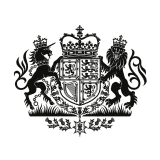
The Ownerless Property Transfer Scheme – a centuries-old regime creates new opportunities
King's and Lord Treasurer's Remembrancer
Abandoned properties are a blight on communities. Most of the time, boarded-up or decaying buildings recall the failed plans of absent owners. Sometimes, there is no owner, and the property has ‘fallen to the Crown’. But what happens to land and buildings in this situation?
The Crown’s right to claim ownerless property has its roots stretching down through the ages, but now presents a new path to public ownership and allows the King's and Lord Treasurer's Remembrancer (KLTR) department as the Crown’s representative to fulfil its modern responsibilities. The Ownerless Property Transfer Scheme (OPTS), which launched this spring, is an example of how collaborative efforts can chart a path through a landscape based partly on mediaeval rights to meet modern land use and ownership needs. This aims to create new opportunities to use ownerless land productively.
Ownerless property (known as bona vacantia) forms a small subset of vacant and derelict land. Bona vacantia properties are usually most recently owned by now-dissolved companies. They can be anywhere in the country, of any size. They can include land, residential and commercial properties, and unusual titles. Pilot projects have included a ruined church and a seal harbour, and some properties have been successfully transferred to communities and local authorities. Often, these properties have a low commercial value but are potentially extremely useful to the public.
Offering best value to the public
In creating the OPTS, the KLTR is following a recommendation from the Scottish Land Commission’s Vacant and Derelict Land Taskforce. Their report described the KLTR as a potential “gamechanger” for overcoming ownership issues as its powers and functions are unique and if they were to be reformed to align with wider regeneration and land reform objectives could have a significant impact.
The Taskforce report stated that the KLTR was an important gatekeeper, whose role should be expanded. Whilst the statutory powers and role of the KLTR have not changed, its approach to ownerless property has fundamentally shifted onto a proactive footing. Rather than selling properties at auction, or disclaiming them (that is, waiving any Crown interest), properties that might be useful for community groups, local authorities or other public bodies can apply to receive the property.
The OPTS application process is rigorous but inclusive. Those without funding or a formal legal structure can apply as long as they meet the criteria at the time of transfer. The Scheme removes the cost barrier, often seen as a brake on community ownership. Properties are now transferred for a nominal sum: the KLTR's legal costs plus £1. An advisory panel of experts helps to assess the benefits of proposed uses, but this should come after discussions within the community. The Scheme is designed to encourage collaboration between local authorities, public and community bodies to produce sustainable outcomes for the local community.
A collaborative, flexible design
The OPTS is an example of close engagement between governmental, quasi-governmental and non-governmental organisations to create a scheme that extracts the best possible value for the public. The KLTR team designing the scheme worked closely at every stage with stakeholder organisations, including a formal consultation inviting views on how best to run it. This collaborative approach continues. Stakeholders and delivery partners provide feedback on the Scheme's effectiveness in the OPTS Stakeholder Forum. They also help coordinate communication with the community sector.
As an administrative scheme, not one created by law, OPTS can be flexible and responsive. The Scheme’s effectiveness, and impact on local communities, is being carefully monitored and can be changed where feedback suggests that this would better serve its objectives and the public interest. A continuing dialogue with those working in the field will also help to shape the Scheme’s operation as awareness of it grows.
The future – an increasingly proactive approach
Currently, the OPTS requires applicants to find ownerless properties themselves and to carry out some initial research on their legal status using publicly available information from Companies House and the Registers of Scotland. As the Scheme becomes established, and a permanent fixture in the public and community ownership landscape, the KLTR department is looking to work with others to proactively identify ownerless properties which could benefit local communities. Watch this space!